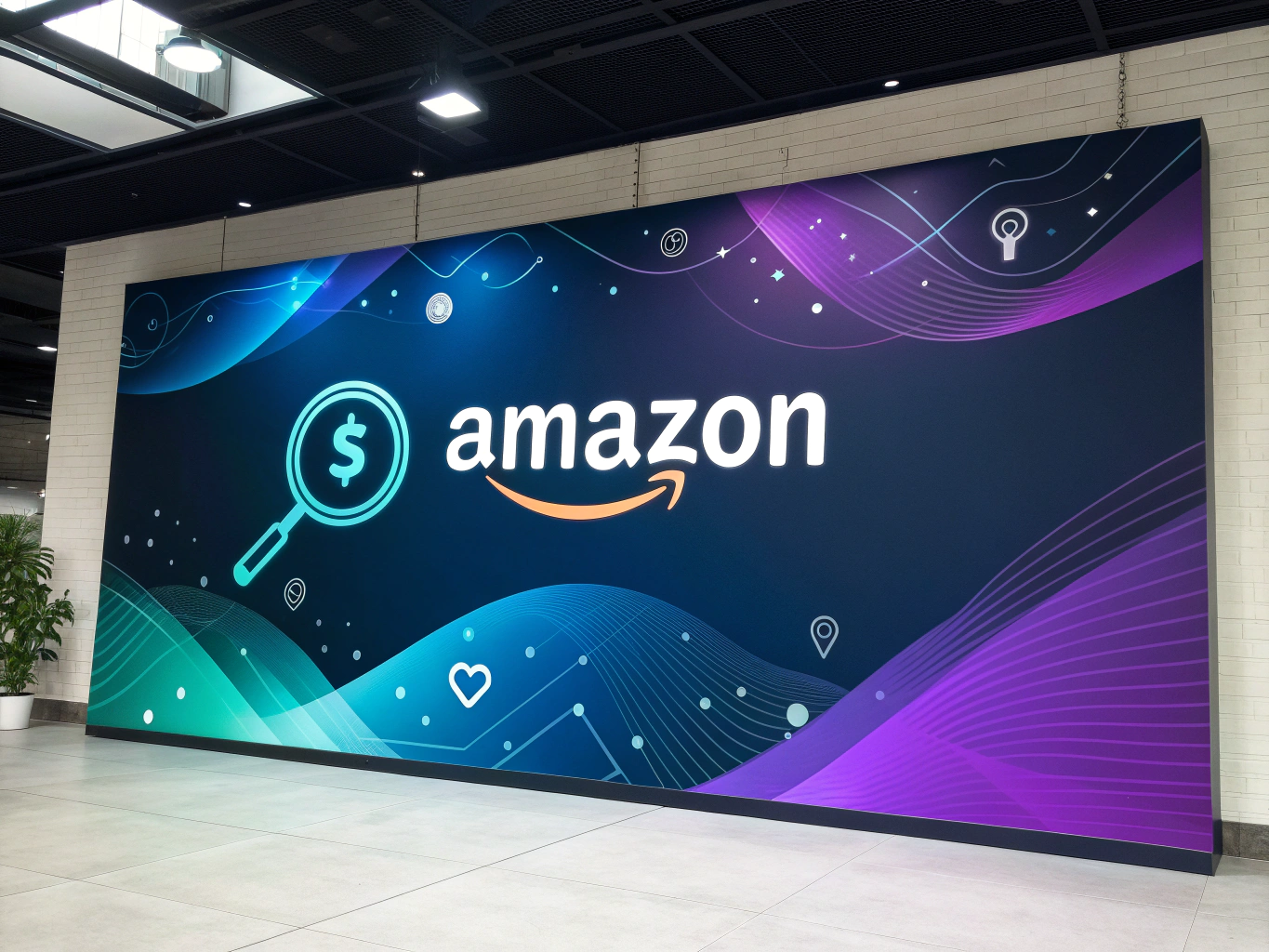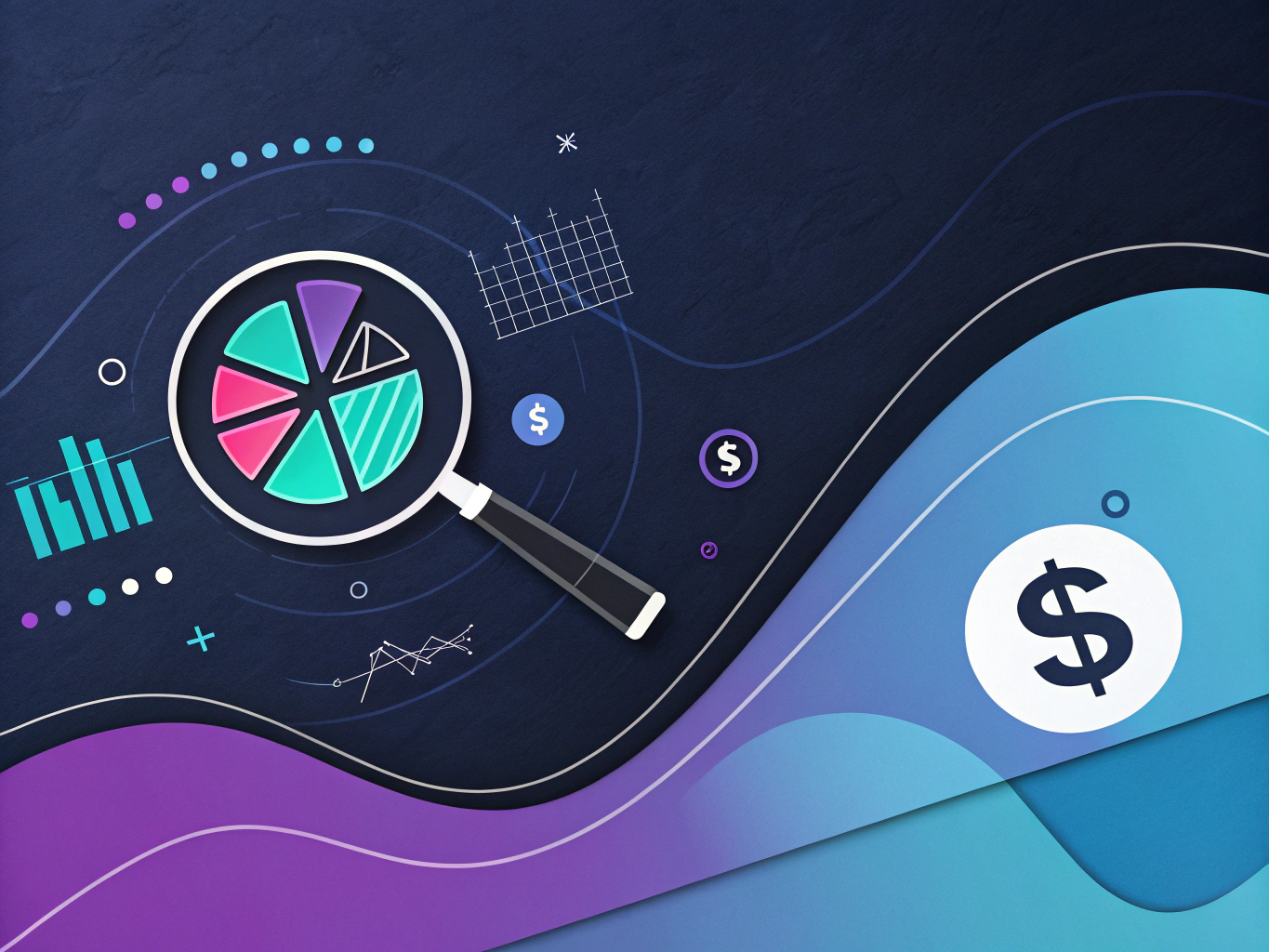Let’s talk about the elephant in the room that every Amazon seller wrestles with: referral fees. You know, that percentage Amazon takes from every sale that somehow always feels a bit too high? Yeah, that one.

Here’s the thing – while everyone’s busy debating whether to sell on Amazon or build their own Shopify empire, they’re missing the crucial details that actually determine success on the platform. And referral fees? They’re the silent profit-killer that too many sellers don’t fully understand until they’re knee-deep in inventory.
What Exactly is an Amazon Referral Fee?

Think of Amazon’s referral fee as their commission for connecting you with their massive customer base. It’s like having the world’s biggest shopping mall as your sales partner – except this mall takes a cut of every single sale you make. The fee typically ranges from 6% to 45% of your total sale price (including shipping and gift wrap, by the way).
But here’s where it gets interesting – and by interesting, I mean potentially complicated for your profit margins. Unlike your local consignment shop’s straightforward 30% cut, Amazon’s referral fees vary wildly depending on what you’re selling. It’s like playing a game where the rules change based on which piece you move.
Breaking Down the Basic Structure
Most categories hover around the 15% mark, but don’t get too comfortable with that number. I’ve seen countless sellers make the mistake of building their entire business model around that percentage, only to discover their specific category has different plans for their profit margins.
For example, if you’re selling personal computers, you’re looking at a relatively modest 8% fee. But if you’ve got your eye on selling Amazon device accessories? Brace yourself for a whopping 45% referral fee. It’s like Amazon’s saying, “Sure, you can play in our sandbox, but we’re keeping most of the sand.”
The Real Impact of Amazon Referral Fees on Your Business
Let’s get practical here. Say you’re selling a product for $100 with free shipping. In a category with a 15% referral fee, Amazon’s taking $15 right off the top. But wait – there’s more (isn’t there always?). Add in FBA fees (you may need the Amazon FBA calculator for this as well), storage costs, and suddenly that $100 sale isn’t looking quite as profitable as you’d hoped.
The Hidden Complexities of Fee Calculations
Here’s something that trips up even experienced sellers: the fee isn’t just calculated on your product price. That total includes shipping charges, gift wrap fees – basically anything the customer pays. So if you’re selling that $80 product with $2.89 shipping? The referral fee applies to $82.89, not $80.
And don’t forget about those minimum referral fees lurking in certain categories. Jewelry sellers, I’m looking at you – with your minimum $2 referral fee per item. It might not sound like much, but on low-priced items, it can eat your profits faster than my kid goes through Halloween candy.
Category-Specific Considerations That Matter
Let’s break this down with some real numbers that matter for different types of sellers:
- Electronics: 15% (minimum $0.30)
- Baby Products: 8% for items ≤ $10, then 15% (minimum $0.30)
- Beauty Products: 8% for items ≤ $10, then 15% (minimum $0.30)
- Jewelry: 20% (minimum $2.00)
- Amazon Device Accessories: 45% (yes, really)
Smart Strategies for Managing Amazon Referral Fees
After analyzing thousands of products through ProductScope AI’s data, I’ve noticed some patterns that successful sellers use to optimize their referral fees. It’s not about avoiding them (unless you’ve figured out how to sweet-talk Amazon, in which case, please share your secrets), but about working smarter within the system.
Category Selection: Choose Wisely
Here’s a pro tip that most sellers miss: some products can legitimately fit into multiple categories. Each category might have different referral fee structures. For example, a yoga mat could potentially be listed under Sports & Outdoors or Health & Personal Care. The difference in referral fees between categories could mean significant savings at scale.
Pricing Strategy: The Art of the Possible
Think of your pricing strategy like a chess game – every move matters. Consider these factors:
- Bundle pricing can help spread referral fees across multiple items
- Price points just below category thresholds can optimize fee structures
- Strategic shipping fees can impact your total referral fee calculation
Remember, selling on Amazon isn’t just about listing products and hoping for the best. It’s about understanding the ecosystem and making it work for you. The amazon referral fee is just one piece of the puzzle, but it’s a crucial one that impacts every sale you make.
Think of these fees not as obstacles, but as the cost of accessing Amazon’s massive customer base. Tools like JumpSend can help sellers generate reviews and optimize their product launch strategies, which can offset some of the impact of referral fees by boosting conversions. After all, where else can you reach millions of potential customers while sitting in your pajamas? (Not that I’m doing that right now… okay, maybe I am.)
Current Amazon Referral Fee Structure

Let’s cut through the noise and get to what really matters – the actual fees you’ll pay as an Amazon seller. Because let’s face it, understanding Amazon referral fees isn’t exactly like binge-watching your favorite sci-fi series (trust me, I’ve tried both).
Standard Category Rates: The Not-So-Standard Standard
Remember that intern analogy I love using for AI? Well, Amazon’s fee structure is kind of like that overachieving intern who keeps changing the coffee order system – it looks simple at first glance but gets surprisingly complex when you dig deeper.
The baseline amazon referral fee typically hovers around 15% for most categories. But here’s where it gets interesting – Amazon’s actually created a sliding scale that would make a rollercoaster designer proud. Some categories dip as low as 8% (hello, personal computers!) while others soar to a whopping 45% (looking at you, Amazon device accessories).
Category Breakdown: Where Your Money Goes
- Electronics: 15% (with some exceptions for high-ticket items)
- Baby Products: 8% for items under $10, 15% otherwise
- Jewelry: 20% (because apparently diamonds are forever, and so are their fees)
- Beauty and Personal Care: 8-15% depending on price point
- Amazon Device Accessories: 45% (yes, really)
Calculating Your Amazon Referral Fee: More Than Just Basic Math
Here’s something that might blow your mind – the amazon referral fee isn’t just calculated on your product price. It’s based on the total amount your customer pays, including shipping and gift wrap charges. Kind of like how your taxes include all those mysterious additional charges you never quite understood.
The Real Math Behind Your Fees
Let’s break this down with a real example (because who doesn’t love a good math problem?). Say you’re selling a trendy tech gadget for $100 with $5.99 shipping. Your referral fee calculation would look like this:
- Total customer payment: $105.99
- Category rate: 15%
- Referral fee = $105.99 x 0.15 = $15.90
But wait, there’s more! (Sorry, couldn’t resist the infomercial callback.) Some categories have minimum referral fees regardless of your sale price. For instance, jewelry has a minimum fee of $2 per item. This means even if you’re selling a $5 bracelet, you’re still paying that $2 minimum.
Special Pricing Scenarios: The Plot Thickens
Running a promotion? The referral fee adjusts based on the final sale price, not your original listing price. This is crucial for those flash sales you’re planning—especially if you’re selling trending Halloween costumes, where seasonal demand can spike suddenly, impacting your overall pricing strategy. If you discount that $100 item to $50, your referral fee drops accordingly. Finally, some good news!
Impact on Different Business Models
Let’s get real about how Amazon referral fees hit different types of sellers. Because here’s the thing – whether you’re running a private label empire or diving into retail arbitrage, these fees aren’t just numbers on a spreadsheet. They’re the difference between scaling up and barely breaking even.
Private Label Sellers: Playing the Long Game
For private label sellers, Amazon referral fees are like that annoying cousin who shows up at every family dinner – you can’t avoid them, but you can learn to work with them. The key? Building your costs into your product development from day one. I’ve seen too many sellers design amazing products only to realize their margins got eaten alive by fees they didn’t account for.
Think about it this way: If you’re selling in a category with a 15% referral fee, that’s not just eating into your profit – it’s reshaping your entire product strategy. You need to either command premium prices through strong branding or find manufacturing efficiencies that give you breathing room.
Wholesale Warriors: Volume vs. Margins
Wholesale sellers face a different beast entirely. When you’re moving serious volume, even a 1% difference in referral fees can mean thousands in profit or loss. That’s why understanding how to sell wholesale effectively on Amazon can be a game-changer for maximizing profits while keeping costs under control.
I recently worked with a wholesale seller who switched from electronics (15% referral fee) to industrial supplies (12% referral fee). Small difference, right? Wrong. On their $500,000 monthly revenue, that 3% savings translated to an extra $15,000 in monthly profit. Sometimes the best moves aren’t the flashiest ones.
Optimizing Your Amazon Referral Fee Strategy

Look, we can’t escape Amazon referral fees entirely (trust me, I’ve looked for loopholes). But we can get smarter about how we handle them. Here’s what actually works:
- Bundle strategically: Combine high-margin items with lower-margin ones to average out your referral fees
- Test different categories: Sometimes products can legitimately fit in multiple categories with different fee structures
- Focus on value-add features that justify higher prices without increasing your fee percentage
The Brand Referral Bonus Program: Your Secret Weapon
This is the closest thing to free money Amazon’s giving out right now. If you’re not enrolled in the Brand Referral Bonus program, you’re literally leaving cash on the table. We’re talking about getting back up to 10% of your referral fees on sales driven by non-Amazon marketing.
Future-Proofing Your Amazon Business
The ecommerce landscape is shifting faster than a Star Trek transporter malfunction. Amazon’s referral fees aren’t static – they evolve with the market. Smart sellers are already preparing for what’s next:
- AI-powered pricing tools that automatically adjust for fee changes
- Category diversification strategies to spread risk
- Strong off-Amazon presence to reduce dependency on the platform
Final Thoughts on Managing Amazon Referral Fees
Here’s what it all comes down to: Amazon referral fees aren’t just a cost of doing business – they’re a strategic lever that smart sellers learn to pull. The most successful Amazon entrepreneurs I know don’t waste energy fighting these fees. Instead, they build systems and strategies that turn fee management into a competitive advantage.
Think of Amazon referral fees like gravity – you can’t eliminate them, but you can learn to fly within their constraints. The sellers who thrive are the ones who stop seeing fees as obstacles and start seeing them as parameters for innovation.
Remember: The goal isn’t to avoid Amazon referral fees (good luck with that). It’s to build a business model so strong that these fees become just another variable in your success equation. Whether you’re just starting your Amazon selling journey or scaling an existing operation, understanding and optimizing for referral fees isn’t just smart business – it’s essential survival.
And hey, if you’re feeling overwhelmed by all this? That’s completely normal. The Amazon marketplace is complex, but it’s not rocket science (though sometimes the fee calculations might make you think otherwise). Start with the basics, test different strategies, and keep optimizing. Your future self will thank you for it.
If you’re considering expanding beyond Amazon and exploring other platforms, you might want to consider Walmart Seller Central as a viable option. This platform offers a different fee structure and can be a strategic addition to your e-commerce portfolio.
Additionally, if you’re interested in unique opportunities, exploring programs like the Temu Affiliate Program might provide alternative revenue streams.
For those looking to enhance their online presence, utilizing tools for e-commerce product images can significantly impact your sales and engagement with customers.
And if you’re curious about competitive pricing and features, explore the ProductScope AI Pricing page to see how our tools can assist in optimizing your strategies.
👉👉 Create Photos, Videos & Optimized Content in minutes 👈👈
Related Articles:
- Optimize Pricing with Amazon’s FBA Calculator | ProductScope AI
- Is Amazon FBA Worth It in 2025? Real Profit Numbers
- Sell Books to Amazon for Cash: A Quick Start Guide – ProductScope AI
Frequently Asked Questions
What is the Amazon referral fee?
The Amazon referral fee is a commission charged by Amazon on each sale that occurs through its platform. It is essentially the cost for sellers to access Amazon’s vast customer base and infrastructure, and it varies depending on the product category.
How much is the Amazon referral fee?
The Amazon referral fee typically ranges from 6% to 45% of the product’s selling price, depending on the category. Most categories have a standard referral fee of around 15%, but it’s important for sellers to check the specific fee structure for their product category.
How to reduce the Amazon referral fee?
To reduce the Amazon referral fee, sellers can focus on optimizing their product category selection, ensuring they are listed under the most appropriate category with the lowest possible fee. Additionally, sellers can explore becoming a part of Amazon’s programs like the ‘Amazon Handmade’ or ‘Launchpad’, which might offer different fee structures.
How does the Amazon referral fee work?
The Amazon referral fee is deducted as a percentage of the total sales price for each item sold. This fee is automatically calculated and subtracted from the seller’s account balance during the payout process, simplifying the fee management for sellers.
How to calculate referral fee Amazon?
To calculate the Amazon referral fee, multiply the product’s selling price by the applicable referral fee percentage for its category. Sellers can find the specific percentage for their product category in Amazon’s fee schedule, ensuring accurate fee calculation and financial planning.
About the Author
Vijay Jacob is the founder and chief contributing writer for ProductScope AI focused on storytelling in AI and tech. You can follow him on X and LinkedIn, and ProductScope AI on X and on LinkedIn.
We’re also building a powerful AI Studio for Brands & Creators to sell smarter and faster with AI. With PS Studio you can generate AI Images, AI Videos, Chat and Automate repeat writing with AI Agents that can produce content in your voice and tone all in one place. If you sell on Amazon you can even optimize your Amazon Product Listings or get unique customer insights with PS Optimize.
🎁 Limited time Bonus: I put together an exclusive welcome gift called the “Formula,” which includes all of my free checklists (from SEO to Image Design to content creation at scale), including the top AI agents, and ways to scale your brand & content strategy today. Sign up free to get 200 PS Studio credits on us, and as a bonus, you will receive the “formula” via email as a thank you for your time.
